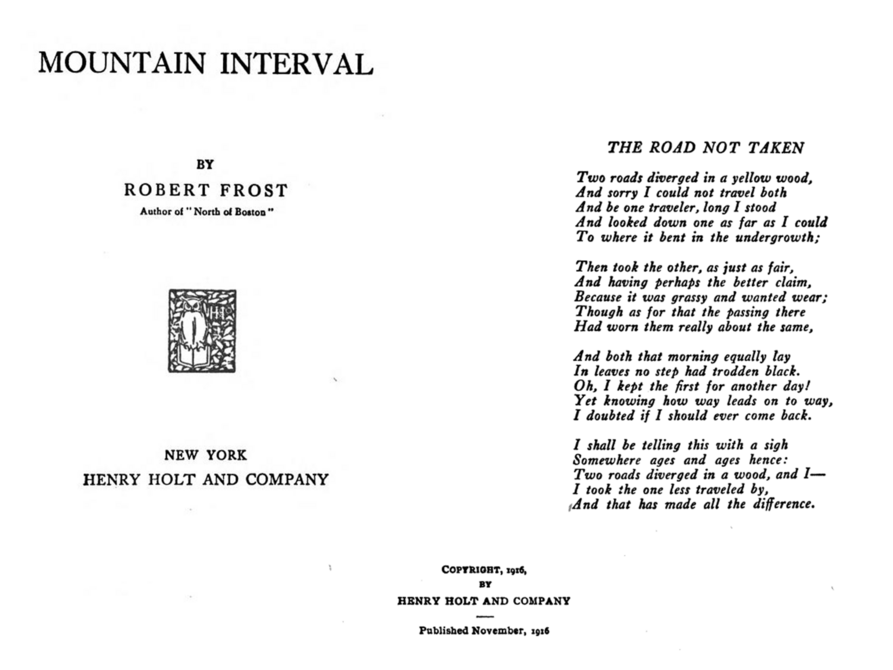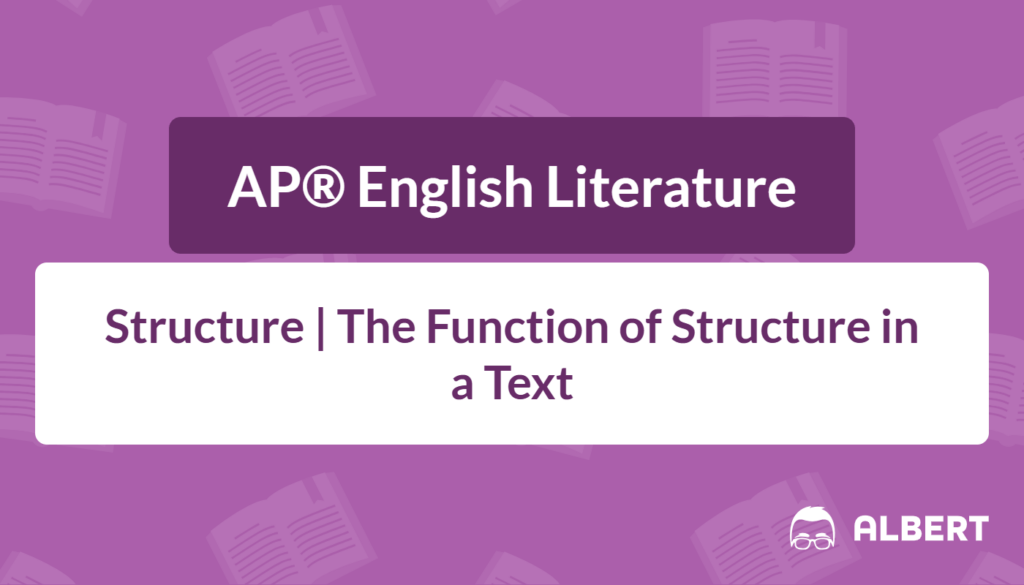What We Review
Analyzing the Structure in Poetry For the AP® Lit Exam
Poetry can feel challenging at first, especially when it seems like every part of a poem carries hidden meaning. However, paying attention to structure can untangle much of that mystery. Structure includes how lines are organized, how stanzas are arranged, and how rhyme and meter shape the poem’s overall flow. When students analyze the structure of a poem, they gain insights into the work’s deeper themes and emotional resonance.
Understanding this element of poetry is crucial for success on the AP® Literature exam. Though theme, tone, and figurative language are important, it is the form and design of a poem that often underscore the poet’s purpose. Recognizing how a poem’s organization relates to its meaning will lead to stronger essays and more confident discussions in the classroom.
What is Structure in Poetry?
Structure in poetry describes the framework of a poem’s form and layout. It deals with line breaks, stanza arrangement, rhyme scheme, and meter. While theme and tone focus on meaning and emotion, structure explains the physical construction of each line and stanza. It also indicates the poem’s pacing—how swiftly or slowly readers move from one idea to the next.
For instance, consider a brief section of William Shakespeare’s “Hamlet”—although a play, portions of it are written in blank verse, which is unrhymed iambic pentameter. In the famous line, “To be, or not to be: that is the question,” each segment generally follows a rhythmic pattern (da-DUM) repeated five times. Even though this text is dramatic rather than a typical poem, Shakespeare’s use of metric lines highlights central ideas. The urgency in Hamlet’s soliloquy aligns with the steady heartbeat-like pattern, reflecting his conflicted state of mind. Observing the way the language is structured here reveals how a measured rhythm can heighten the tension and thematic weight of the text.
Types of Structure in Poetry
A poem’s structure can vary widely depending on the poet’s intentions. Recognizing different types of structure in poetry is an essential step before diving deeper into analysis.
Traditional Forms
Some poems adhere to traditional forms that follow a strict pattern of rhyme, meter, and length. Sonnets, for example, are 14-line poems often written in iambic pentameter. They usually end with a couplet that ties together the poem’s main ideas. Haikus consist of three lines with a 5-7-5 syllable count, capturing a fleeting moment or insight. Villanelles, known for their refrains, repeat lines at regular intervals to emphasize a central motif.
In a Shakespearean sonnet, each stanza (or quatrain) sets up a core issue or perspective, which the final two lines resolve or clarify. This structural pattern helps the poem build tension, then release it with a concluding couplet that drives home the main theme.
Free Verse
Free verse poems break away from predictable patterns and do not conform to set rhyme schemes or meters. Yet, there is still a structure in free verse, though it is more subtle. Poets often rely on enjambment, line breaks, and spacing to highlight important ideas. The absence of a strict pattern can give the poet greater flexibility, creating a tone that feels more conversational or spontaneous.
Stanza Patterns
A stanza is a grouped set of lines within a poem, often set off by a space. Stanzas can mimic paragraphs in prose by organizing ideas and images. Some poets use consistent stanza lengths throughout, which can establish a regular rhythm. Others vary the length to show changes in mood or subject matter. The way stanzas are arranged can shift how readers experience the poem’s pacing, tone, or tension.
Rhyme and Meter
Rhyme and meter come into play when poets decide on or deviate from specific sound patterns. Common rhyme schemes like ABAB or AABB unify lines by creating echoes of sound. Regular meters—such as iambic pentameter or trochaic tetrameter—create a deliberate beat. In Shakespeare’s “Hamlet,” the majority of the noble characters speak in iambic pentameter, adding a dignified and melodious quality. Meanwhile, breaks from that pattern often signal emotional upheaval or heightened drama.
Rhyme and meter are not merely decorative. They direct how readers naturally pace each line and highlight crucial points. Therefore, analyzing these elements reveals what the poet considers vital, as heightened rhythm often appears in lines conveying significant themes or emotions.
How to Analyze the Structure of a Poem
A clear, step-by-step approach can transform structural analysis from an abstract skill into a straightforward method. To analyze the structure accurately, try following these stages:
- Read the poem: Begin with an open mind. Note immediate impressions or emotional responses.
- Identify the type of structure: Determine if it is a traditional form (like a sonnet or a villanelle) or free verse.
- Look at stanza lengths: Ask whether the poem has uniform stanzas or varying lengths. Notice how each stanza might add or shift meaning.
- Examine rhyme and meter: Does the poem have a clear rhyme scheme? Is there a consistent meter, or does the poet break it for effect?
- Consider any breaks or shifts: Observe line breaks, stanza breaks, or sudden changes in rhythm, and reflect on why the poet might choose these moments for a shift.
A classic poem worth highlighting is Robert Frost’s “The Road Not Taken.” By applying these steps, notice how Frost uses four quatrains (stanzas of five lines each), a consistent ABAAB rhyme scheme, and a steady, almost conversational meter. The rhyme scheme subtly unites each stanza, encouraging readers to move through the poem fluidly. When Frost writes, “Two roads diverged in a yellow wood,” the straightforward rhythm mirrors the calm pace of a traveler pausing at a fork in the path. However, each stanza builds suspense, emphasizing the internal debate about choice and consequence.
Taking time to analyze every structural aspect—stanza arrangement, rhyme scheme, and breaks—demonstrates how the poem’s design supports its central theme: the impact of decisions and the roads one chooses to follow in life.

Real-World Importance of Understanding Structure in Poetry
Appreciating what structure in poetry entails does more than help with AP® Literature essays. It refines reading skills, teaching focus on detail, pattern recognition, and critical thinking. In any literary work, structure guides how ideas unfold. Identifying repeated patterns, shifts, or sudden changes in a text is a valuable skill beyond the classroom, allowing a deeper grasp of how writers across genres build their arguments or narratives.
Moreover, recognizing structure in poetry fosters an emotional understanding of the text. A well-placed break in a free verse poem can pack a powerful punch, while a tight rhyme scheme in a traditional form can give a poem a musical quality. These effects resonate with readers, making literature memorable and encouraging analytical conversations that connect the text’s craft to its content.
Frequently Used Vocabulary in Structure Analysis
Below is a quick reference chart of essential terms used when discussing structure in poetry.
| Term | Definition or Key Feature |
| Stanza | A grouped set of lines in a poem, often set off by a space |
| Rhyme Scheme | The pattern of end rhymes in a poem (e.g., ABAB, AABB) |
| Meter | The rhythmic pattern of stressed and unstressed syllables |
| Enjambment | The continuation of a sentence or phrase from one line to the next |
| Caesura | A strong pause within a line, often signaled by punctuation |
| Quatrain | A stanza of four lines, frequently used in sonnets |
| Volta | A turn or shift in thought or argument, especially in sonnets |
| Line Break | The point where a line of poetry ends, affecting pacing and emphasis |
Conclusion
Examining types of structure in poetry allows students to see how form can shape, reinforce, or even challenge a poem’s themes. Rhyme schemes, stanza patterns, and meter can all work together to influence the reader’s experience. Each detail of a poem’s design matters, and recognizing these elements will boost analytical skills for the AP® Literature exam.
Though the process may seem complex at first, following a structured approach makes it more accessible. By focusing on line breaks, rhyme, meter, and shifts, students can uncover the central ideas embedded in each verse. Ultimately, understanding the mechanics of poetic construction adds depth to literary interpretation and opens up new layers of meaning in every line.
Sharpen Your Skills for AP® English Literature and Composition
Are you preparing for the AP® English Literature and Composition test? We’ve got you covered! Try our review articles designed to help you confidently tackle real-world AP® English Literature and Composition problems. You’ll find everything you need to succeed, from quick tips to detailed strategies. Start exploring now!
- AP® English Literature: Plot Structure
- AP® English Literature: Sequence of Events
- AP® English Literature: Contrasts in Structure
- AP® English Literature: How Plot Events Shape Meaning
- AP® English Literature: Conflict in a Story
Need help preparing for your AP® English Literature and Composition exam?
Albert has hundreds of AP® English Literature and Composition practice questions, free response, and full-length practice tests to try out.








